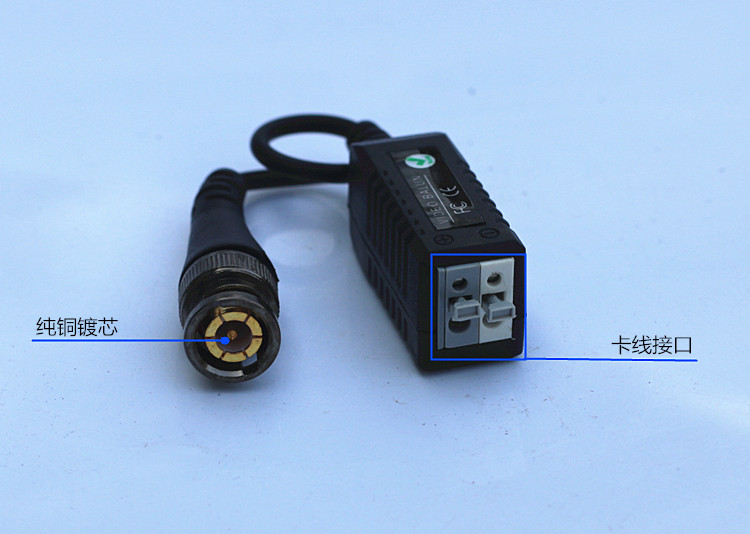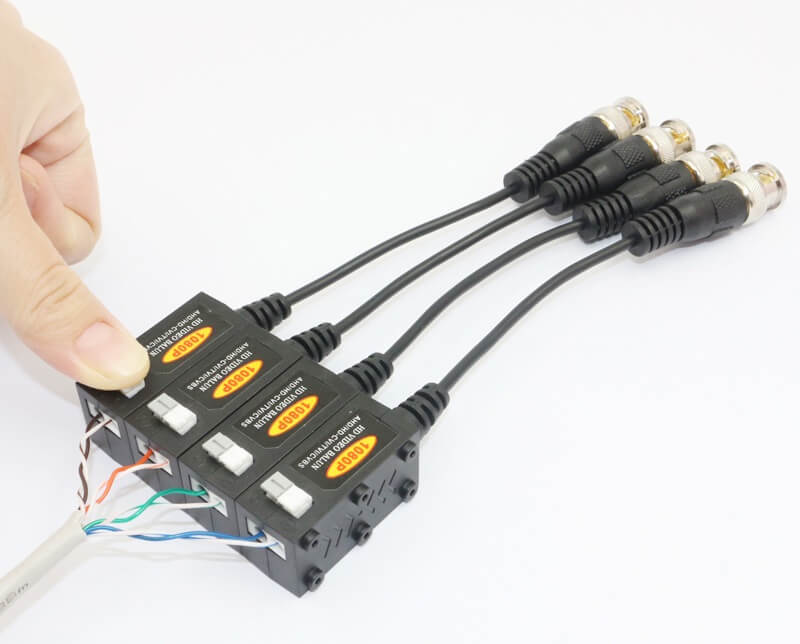1. What is a twisted pair video transmitter
Twisted pair video transmitter uses Category 5 network cables instead of coaxial cables. Twisted-pair video transmission equipment uses inexpensive and convenient materials of Category 5 or above unshielded twisted pair (UTP computer network cable). One pair of wires transmits a high-quality video signal. The remaining twisted pairs can be used to transmit audio signals or control the RS-485 data of the pan/tilt, etc., and can also transmit more video signals. There is no mutual interference, and the transmission distance is optional from 0 to 1500 meters.
2. Principle of twisted pair video transmitter
The principle of twisted pair video transmitter is to use twisted pair to transmit video signals. It is a technology that has only emerged in recent years. The so-called twisted pair generally refers to the network cable. The twisted pair transmission uses the principle of differential transmission to transform the video signal at the transmitting end. After being transmitted through the twisted pair cable, the two video signals with opposite polarities are subtracted into a normal video signal at the receiving end, so common mode interference can be effectively suppressed, even in strong In the interference environment, its anti-interference ability is far better than coaxial cable, and through the processing of video signal, the image signal transmitted by it is clearer than coaxial cable, and the same network cable will not interfere with each other.

3. The role of twisted pair video transmitter
1. Coaxial cable In the monitoring system, the use of 75Ω-5 coaxial cable is more common. Generally, the distributed capacitance of this kind of coaxial cable is about 50-60pF/m, and the DC resistance of the cable will attenuate the transmitted signal. Tests show that a signal with a frequency of 5MHz will be attenuated by about 5dB when it is transmitted within a 75Ω-5 coaxial cable for 100m. The higher the signal frequency, the greater the attenuation. The image signal is a high-frequency broadband signal. The color part of the image is at the high end of the frequency. When the color image signal is transmitted by a coaxial cable, its brightness and color will be attenuated, especially as the transmission distance increases. It will be faded or even distorted. Tests in the laboratory found that when the color image signal is transmitted about 200m in a 75Ω-5 coaxial cable, its amplitude and color have been significantly attenuated. If you want to transmit longer distances, you must also add a coaxial video amplifier to ensure high-quality transmission of video signals within a distance of 2Km.
2. Twisted-pair wire When using twisted-pair wire as the transmission medium, the commonly used category 5 UTP cable is generally used. The characteristic impedance is about 100Ω, and the distributed capacitance is about 15pF/m. Compared with the coaxial cable, the attenuation is greater, and the transmission distance is only 43% of the coaxial cable. The use of fully automatic twisted pair video transmission equipment and the use of twisted pair cables can ensure high-quality transmission of video signals within a distance of 1.5Km. In the laboratory, a special instrument was used to test the performance indexes of the twisted pair transmission image signal.
